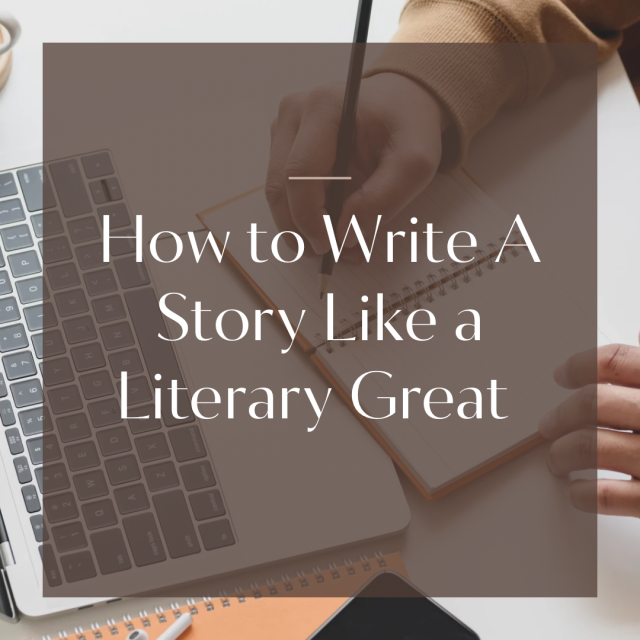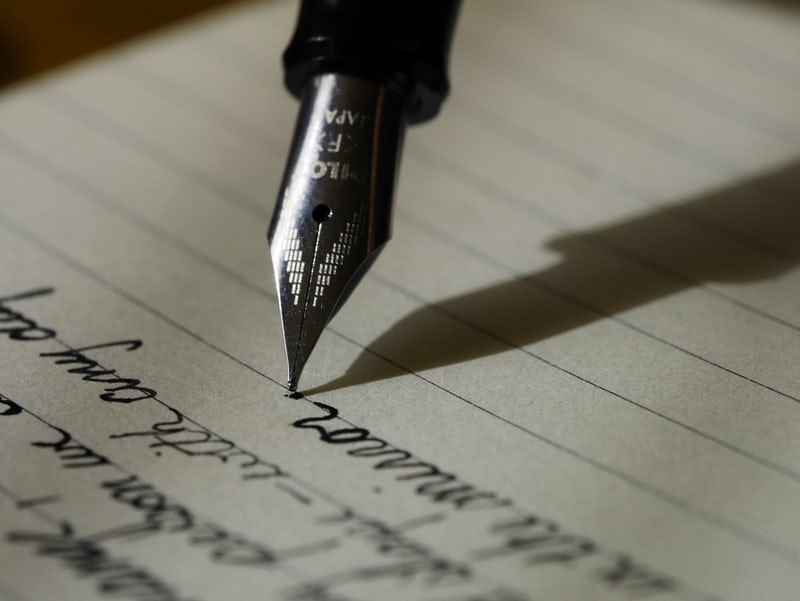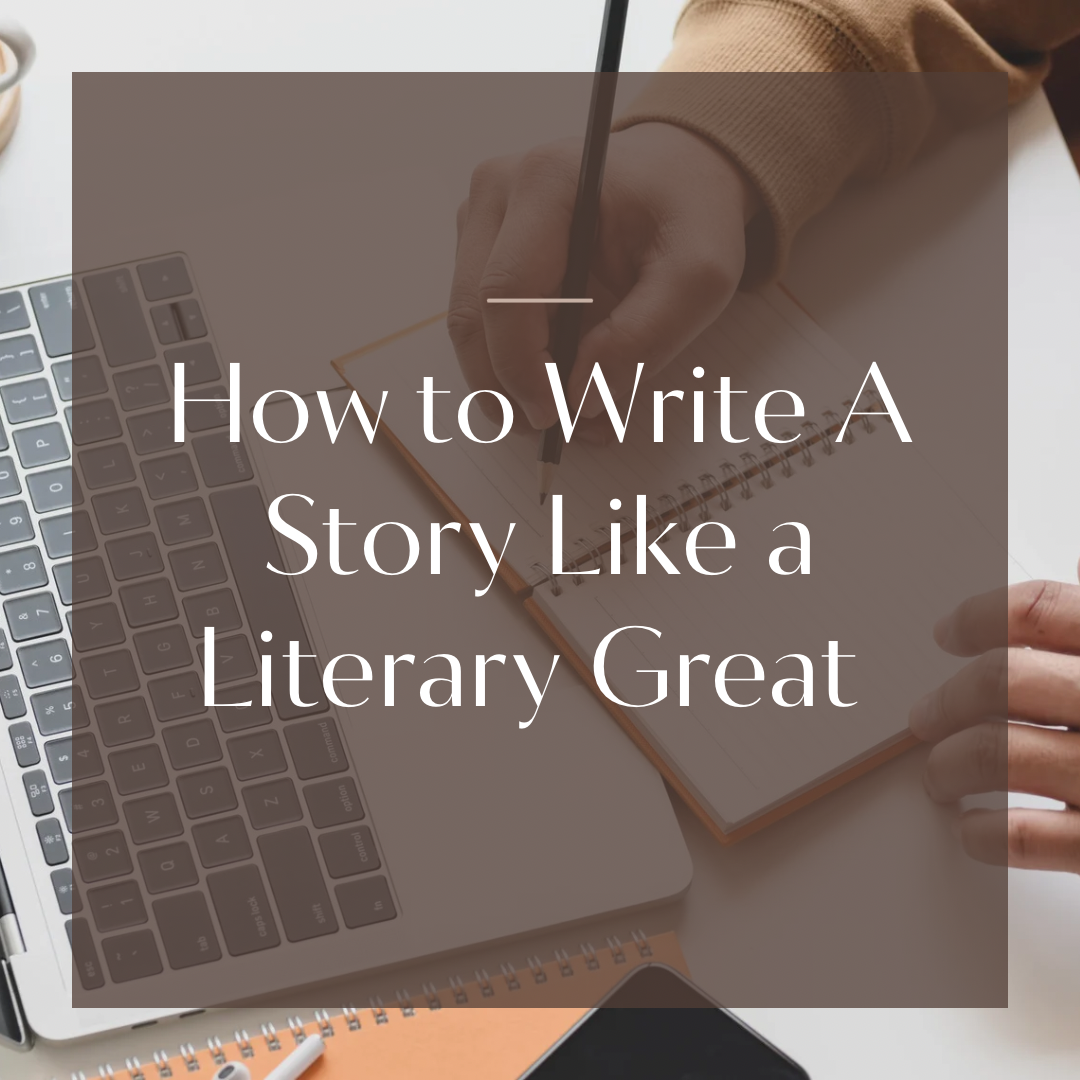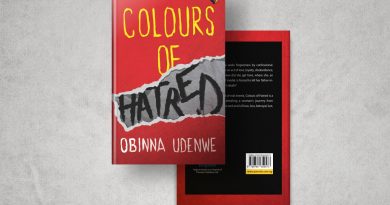How To Write A Story Like A Literary Great (Story Writing Tips + Examples)
Budding writers often wonder how to write a story. Not just a story, but a good story that everyone remembers and recommends. The world is full of stories, so you have to work hard at yours to make it outstanding. So if you often wonder how to create a story, you have come to the right place.
Prolific writer, Charles Opara in his article, offers writers a step-by-step guide on how to write a good story. This guide will help you figure out how to create the best story you possibly can. It will also show you how to overcome certain challenges that writers face such as unproductivity nnd writers’ block.
Ready to learn? Let’s read on.

How To Write A Story Like A Literary Great (Story Writing Tips + Examples)
It is almost impossible to learn how to write a story without first understanding the concept of the story. So let’s start by describing or defining a story.
What is a story?
When you think of a story, think of a necklace. Or a string of pearls. The entire string is the narrative. Simply put, it is the fiction-writing mode in which the narrator communicates directly to the reader.
The pearl, in other words, is the description. It usually contains the scenes. (Recall, the four rhetorical modes of discourse: narration, description, exposition, and argumentation.)
Scene vs. Narrative And Why They Matter In Storytelling and Story Writing
The scenes paint a picture and they usually describe places, things, or characters. Consider the piece of string between two adjacent pearls.
In story writing, scenes move at a fast pace. The events that happen in this part are not detailed, and for that reason, advance much quicker.
Here, the writer wishes to inform the reader that this or that occurred, or that time has passed (events that take place between one scene and the next) albeit summarily. Without this vital part it would be difficult to follow the story, difficult to tell what stage the story is in.
While the pearls handle the significant events the writer wishes to share in detail, the string hides details of events the writer does not wish to bother the reader with. I’m sure you’ll agree that the pearls are the beauty of the necklace, the reason why we buy it. And so it is with fiction.

A Step-by-Step Guide On How To Write A Good Story.
When writing a story, even if you must sacrifice the plot (that thing that connects all your scenes) you can’t write a good fiction without at least a scene, which would most likely feature a character in a setting.
If you try, the outcome will be something aimed at informing the reader (rather than transporting him to a different time and place) like a story outline, a skeletal account, or plot points. And this is not good.
People read fiction mainly to be entertained, and it’s hard to entertain them when they do not feel drawn to your story.
While creating a story, it is important to note that scenes are the building blocks of an entertaining story. There is no better way to make readers feel emotions like joy, anger, disgust, lust, horror, sorrow, tension, excitement and the rest than putting them in a scene with your characters.
Learn to move your story forward: How to keep your readers au fait
The renowned German poet and playwright Bertolt Brecht, who died in 1956, used narrators or narrative figures to fill the missing action in his plays. Today, the use of narrators before a scene opens has become a feature in epic dramas.
These narrators tell us the action that is not played out for us by the actors, the action that we missed between the last scene and the next.
Figure Out What Makes Up A Good Story
- A good story is a collection of scenes connected by a narrative. In other words, it has description and narration.
- Sometimes, a story can have just one scene.
- A good work of fiction can never be just the narrative. (That would be the story outline or the synopsis, which is different from the sample chapters we send to publishers and literary agents).
- The narration that doesn’t occur within a scene, often giving a sketchy account, is meant to help the reader follow the sequence of events in the story. We will refer to this as the narrative.
Master The Parts Or Elements Of A Story
The plot, the story goal, the theme, the characters, the conflict and the setting, especially the opening and final scenes, are six things you need to determine before you begin to write your story.
If you are clear on these, then, only your writing can let you down. Before I learned how to write a story, I used to be one of those people who didn’t plan my plot right up till the end before I started to write.
This meant I never knew how my story would pan out until I had reached the very last scene nor did I know how my characters would develop.
My theme was often a mystery to me. Which is why I often had to redraft my stories, many times — too many times. Sometimes having to make major changes to the story.
To forestall against this, develop the habit of working with and working through a story plan that includes the six elements of fiction. By story plan, I mean a skeletal framework on what you want to write about. A story plan is a vital step to writing a good story.

The elements of fiction (expressed as parts of the figurative story necklace)
Going back to our metaphor of the necklace, let’s appreciate the various elements of fiction better. We find the plot coursing through the whole necklace. Having the same dynamics as fluid, it moves much faster in the narrow string and much slower in the pearl.
As I’ve already said, the beads would be that part of the story where characters perform actions. The part where your characters and their conflicts unfold, allowing you to form an opinion about them, an opinion not (explicitly) defined for you by the author’s narrative (as we see in the string), allowing you to experience or visualize a character or a setting (through sensory images). The string would be that part that takes you to a scene.
Or, you could say, the events mentioned in summary so the reader can follow the story better (e.g. the passage of time). Looking at the necklace more closely, you’ll notice a repeating pattern in the beads (there usually is, in a good necklace.) This pattern is the theme. There’s one part of the string I still haven’t talked about. The clip.
So, what element of fiction do you think the clip of the necklace represents? Here’s a clue: it’s something that keeps the necklace firmly around your neck. It’s that thing that brings all your elements together. Can you guess? Pause from reading and take a minute to think about it.
The Clip And Its Role In Helping You Learning How To Write A Story.
Without the clip would the necklace stay around your neck? No. It would fall off. So the clip is very important. In fact, without it, there will be no point of owning a necklace; its aim is defeated as you can’t wear it.
If you just carry it in the palm of your hand, no one will see it like it ought to be seen, no one will appreciate it. So what is that which plays the role of a clip in a good story?
It is the thematic statement. The theme has two parts: a concept and a statement. The thematic concept is the design or pattern that we see in the beads while the thematic statement is the clip at the end of the necklace that allows it to be worn. The thematic concept is commonly referred to as the theme.
While there isn’t a common name for the thematic statement, to my knowledge, my guess for its more generic term would be the story goal. (The story goal is different from the character goal, please take note.)
Story goals have to do with the morals or the lessons stories try to teach. The thematic statement is the salient message/idea/point that the reader gets from the story. And what determines this is usually how the story is resolved. So you will not be entirely wrong if you called the clip the resolution.
Decide On What The Point Of Your Story Will Be.
When a story lacks a thematic statement then it is not a good story because it is all plot and no purpose, a collection of different events (different actions described within a setting) that have nothing binding them together, nothing to make you appreciate why the writer took the trouble to tell them. Many readers consider these type of stories a waste of time.
What Makes A Good Story?
Most times, as writers, we focus on the art of writing, neglecting the art of storytelling or story-crafting. A lot of us are good writers, but some of us have trouble telling a good story.
When your writing is up to par, and you’re still having trouble getting your stories accepted for publication, it’s time for you to master the art of storytelling.
Storytelling is what takes your writing from raw sentences to real entertainment. It is like the glaze on a ceramic sculpture that makes it look finished.
If writing is artistic expression, storytelling is artistic direction. The two are like hand and glove. And like hand and glove, they can be separated.

Storytelling: How Story Writing Works.
Begin by asking yourself what the story you want to write is about. Can you say it in one sentence (called an elevator pitch, a premise, or a logline)?
Whenever you’re trying to figure out what a story is really about, look for the internal conflict. When you ask people what a story is about, most make the mistake of telling you the plot of the story.
Well, it’s not the plot. It’s the theme. And it ought to be so because, when you consider our story necklace metaphor, you’ll see that the theme gives the necklace beautiful patterns; it adds value to it. So it’s all about the theme when trying to decide on the worth of the necklace.
If the necklace is supposed to be a thing of beauty, then, it’s all about the patterns on it. If you can summarize the story you want to write in one sentence and make it include the theme, then, that’s it. That’s what it’s about.
The Two Types Of Conflict.
In a good story, there are usually two types of conflicts: the external one and the internal one.
Why? Because a well-developed story makes us appreciate a character’s inner turmoil, his emotional/ psychological struggle, and in the end, it says something about life. Stories with internal conflicts are deep. When you think of a good story to write, remember that conflicts are important.
They paint pictures about the human condition, the human struggle, the human mind, the human character, the human virtue, the human resilience, and more. Ultimately, their resolution by characters who show humanities (even if they are aliens) gives your story its meaning, gives it an underlying message, a lesson that can be framed into one sentence called the thematic statement.
The Six Elements of Fiction.
- Plot
- Theme
- Setting
- Character
- Conflict
- Style
Things like, Point of View and Voice, Tone and many others fall under Style.
The plot
The plot is what happens in your story. It usually revolves around an external conflict.
For example, a man takes the bus home from work after his car breaks down.
The external conflict is all that stands in the way of his trying to get home. The need to get home is the character’s goal. It’s a combination of his car breaking down and all the setbacks he encounters on his way home.
The Theme And It Helps You Create A Stronger Story.
The theme is what your sub-story (your deeper, underlying story) is about. And it revolves around your internal conflict.
A man refuses to let his wife give him a ride back home when his car breaks down.
Why does he refuse his wife’s favour?
Because he’s still mad at her for cheating on him with the school coach, his best friend. They’ve already resolved this matter, but he still wants to give her a hard time over it.
So the internal conflict is the emotions he’s still dealing with surrounding his wife’s unfaithfulness, now that he has knowledge of it.
The theme here is infidelity, or dealing with unfaithfulness, the unfaithfulness of a spouse.
Let’s say our story opens with our protagonist trying to start his car. He gets a call from his wife. He tells her he’s having car trouble and turns down her offer to pick him up.
The rest of the scenes in the story detail the things the man sees on his bus trip, and the discomfort and culture shock he has as a result (he has never taken the bus in his life).
While all this is going on, his thoughts flashback to how he learned of his wife’s affair (exposition) and we understand better the phone conversation he had with her in the beginning, why she said something about him wanting to still punish her.
Our example is taken from a short story called The Bus by Brock Clarke. Most of the scenes take place in the bus so it seems the story is about a bus trip, but it’s not.

The internal conflict hints at what the story is really about.
The story is not about a dreadful bus ride. The bus ride is what happens in the story. That is the plot. The story is about a man trying to punish his wife for an affair she had with his best friend by turning down her offer of a ride home from work.
I know this from the internal conflict. The theme will tell you what the story is about and it usually revolves around an internal conflict.
The Role Of Conflict, Plot, and Theme When Figuring Out How To Write A Story.
You can see that the conflict (both external and internal) is a distinct element of fiction, distinguishable from the plot and the theme. Plot and Theme usually revolve around conflicts. Plot is what happens in a bid to resolve some external conflict. Theme is the idea and the message that the internal conflict brings to our attention.
Do you now see why you should decide what your conflicts will be before you start to type your story? It helps you decide on what will happen in your story and what your story will be about, helps you decide on the plot and the theme.
What happens when a story has more than one external conflict?
Sometimes a story may have several external conflicts and several internal conflicts. But it should have one major internal conflict. If you have two or more internal conflicts, you could end up telling two or more stories instead of one.
That’s not a crime per se, but it is a little too much, from an aesthetic point of view, if you ask me. From an artistic perspective, I don’t advise this. Better for you to break up your story into several chapters and have one theme for each chapter. Or if you’re writing a TV series, have one theme for each episode.
Since the point of a story revolves around an internal conflict, having two internal conflicts would cause some confusion.
(Note that one internal conflict can lead to several external conflicts and not the other way around, not normally. You don’t want your readers to grapple with too many life lessons in one chapter or episode because it would water down or dilute the impact of your piece.)
From our story, our male protagonist could get off the bus and be chased by muggers. This would result in a new external conflict, one that takes place outside the bus: he now wants to escape muggers (the first was getting through an unbearable bus ride home), but it’s still one plot: a man’s effort to get back home after his car broke down (now having two parts: the bus trip and the chase).
When a story has several themes
A story can have several themes. A theme is an idea that the story revolves around. And it is usually rooted in an internal conflict. Several ideas could revolve around one internal conflict. A story can have several themes but it should make a statement about just one (the central theme). From our example, one idea could be unfaithfulness or infidelity. Another could be, resentfulness.
The theme: concept and statement
Earlier, I said the theme is both the idea (concept) and the message (statement) your story carries. If you have an internal conflict, you already have an idea for the theme. What remains now is what statement you make about it. Your theme is not complete unless your story says something about it. And you make it say what you want by how you end your story.
Oh
Determine The Thematic Concept Of The Story.
So, what do you think is the thematic concept of our story example?
How about, ‘Resentfulness vs. truly forgiving’? Begrudging vs. Letting go. What about, ‘the things we put ourselves through to make a point’?
Our ending determines what our thematic statement says.
If the bus trip turns out to be an experience our protagonist wishes he had not undergone, then, the thematic statement would be,
‘Resentfulness after reconciliation leads to regret’?
Or, ‘It doesn’t pay to still begrudge those who have told us they are sorry’.
Or, ‘Refusing to let old wounds heal begets new pains’.
Character and Setting Plays A Good Role In Story Writing.
The other elements of fiction, Character and Setting, are self-explanatory. I won’t go into them. I’ll just say, depending on the length of your story, you ought to devote a certain amount of words to character development and setting. In flash fiction, character development is either omitted completely or done in very few words.
Style
The last is Style, also called ‘writing style‘ or ‘narrative style’. It’s all about the technique you deploy in your narration. You should decide on what style to use after crafting your story, before you sit down to write it. And so it should also be one of your pre-considerations. Style is your art of writing, or your literary expression. It includes things like POV choice, Voice, Tone, Diction and more. It’s very broad.
How To Write a Story Using Diegesis and Mimesis
From our metaphor of a story, some could argue that the string tells more than it shows, and the pearl, a metaphor for a scene (and since scenes are heavy on description), shows more than it tells.
Showing and telling, telling and showing. Aren’t we, as writers, all too familiar with the terms?
The more technical terms would be Diegesis (telling) and Mimesis (showing). They are both style choices.
Diegesis
In diegesis, the narrator tells the story. The narrator presents the actions (and sometimes thoughts) of the characters to the readers or audience. Diegetic elements are part of the fictional world (“part of the story”), as opposed to non-diegetic elements which are stylistic elements of how the narrator tells the story (“part of the storytelling”).
In Diegesis, there is a filter to the action, a narrative filter that gives us a sense of an authorial presence.
We are made even more aware of this presence by the writer’s voice, especially if he or she speaks in a non-standard dialect. Remember the novel The Help by Kathryn Stockett? There are many more examples.
Mimesis
Mimesis is imitative representation of the real world in art and literature. It’s understood as a form of realism in literature.
Dissect The Diegesis vs. Mimesis
Mimesis shows rather than tells, by means of action that is enacted. Diegesis is the telling of a story by a narrator. The narrator may speak as a particular character, or may be the invisible narrator, or even the all-knowing narrator who speaks from “outside” in the form of commenting on the action or the characters. In Diegesis, there’s a filter to the action. In Mimesis, there’s none.
I’m sure you’ll agree that the decision to write with or without a filter is a style choice. So you see, it’s not accurate to say that showing occurs in the beads and telling occurs in the string because it’s a style choice.
A story can be diegetically told, with no aspect of Mimesis. Your writing style pervades all aspects of your story and can be seen in every part of the necklace, both string and bead. The only thing we can be certain of is that the plot moves at a faster pace in the string than in the bead.
Writing is art expression; storytelling is art direction
A good writer is not necessarily a good storyteller and vice versa. Writing is a literary expression; storytelling is literary direction. Some writers do one better than the other.
Think of the other five elements (outside style) as all the things that will make you a good storyteller, a good story crafter while style is everything you need to apply to your writing that will make you a good writer.
To learn how to write a story, learn to create a story plan.
If I’m asked what makes a good story, I would tell them it’s a story that deploys the six elements of fiction (plot, theme, conflict, setting, character and style).
If you want to write better stories, create a story plan that looks something like this:
- Plot Summary (in one or two sentences)
- Theme (in one word)
- Concept of theme (in more than one word)
- Statement of theme (in one sentence)
- Setting (place and time period e.g. present-day, 1994, medieval times.)
- Characters (List all your characters with their relationship to the protagonist or their relevance to the story in brackets.)
- Conflict
- External
- Internal
- Style
- POV
- Voice
- Tone
(You can add other aspects of style not on this list). You can create a story plan before you start writing your story, or after the story has been written. The story plan is supposed to help you figure out ways to plu plot holes and to develop your characters.
Conclusion On How To Write A Story Like A Literary Great.
Good story writing is not as easy as accomplished writers make it seem. But you can write good stories if you choose your scenes, characters and themes wisely. And pay attention to the narrative techniques in your story.
Have you learned the ins and outs of writing a story? Please share your tips with us in the comments section. We want to learn more on how to write a story.

ABOUT THE AUTHOR
Charles Opara is a Nigerian-born author who writes suspense, speculative fiction, and short stories, who is about to publish a collection of short stories. He is a programmer with a passion for groundbreaking technologies. His creative mind enjoys the logic involved in writing stories and programs. In 2015, his horror short “It Happened” was shortlisted for the Awele Creative Trust Prize and in 2017, another story ‘Baby-girl’ was long-listed for the Quramo National Prize in his country. His stories have appeared in Ambit, Flash Fiction Press, and Zoetic Press.
twitter handle: Charles Opara@OparaCc






Pingback: Ibua 2020 Continental Call/ How To Apply (Prize: $550) - Creative Writing News
Pingback: Ibua Journal 2020 Continental Calls For Poems and Stories/ How To Apply (Prize: $550) – My Blog
Pingback: Narrative Arc, Story Arc, Plot Arc and Character Arc (Definitions + Examples + Tips For Creating A Narrative Arc In Your Story) - Creative Writing News
Pingback: Afritondo Short Story Prize 2021/ How To Apply (Prize: $1000) - Creative Writing News
Pingback: How To Became A Bestselling Author In 24 hours: An Interview With Yvonne Chioma Mbanefo - Creative Writing News
Pingback: Commonwealth Short Story Prize 2020 / How To Apply (Prizes: £17,500 + more) - Creative Writing News
Pingback: One Teen Story Contest / How To Apply ($500 + Publication) - Creative Writing News
Pingback: Voyage YA Journal Is Accepting Young Adult Short Stories For Its 2020 Voyage First Chapters Contest/ How to Submit (Payment: $3,500) - Creative Writing News
Pingback: Legendary Tale Anthology Is Accepting Speculative Fiction Submissions/ How to Submit (Awards:$75 + Publication) - Creative Writing News
Olá, fazendo uma busca na internet por bons conteúdos que me ajudem a melhor ainda mais minha escrita, encontrei este site e gostaria de parabeniza-los pelo maravilhoso conteúdo, bem explicativo e simples de entender. Estarei lendo outros post. Acredito que com essas dicas, aumentarei meu potencial de conseguir fazer com que minhas histórias viagem pelo mundo!
Desde já agradeço!
Cainara Biondo
Pingback: Sapiens Plurum 2021 Short Fiction Contest - Creative Writing News
Pingback: The Miles Morland Foundation Scholarship 2021/ How to submit (£18,000 + Publication) - Creative Writing News
Pingback: How To Write Medical School Statements of Purpose (Samples + Tips) - Creative Writing News
Pingback: Do I Need an MFA in Creative Writing to be a Writer? (pros, cons, cost of fees + scholarships + opportunities) - Creative Writing News
Pingback: The Mike Resnick Memorial Award/ How To Submit (Prize: $350) - Creative Writing News
Pingback: 5 Tips on Holding Attention in a Short Story - Creative Writing News